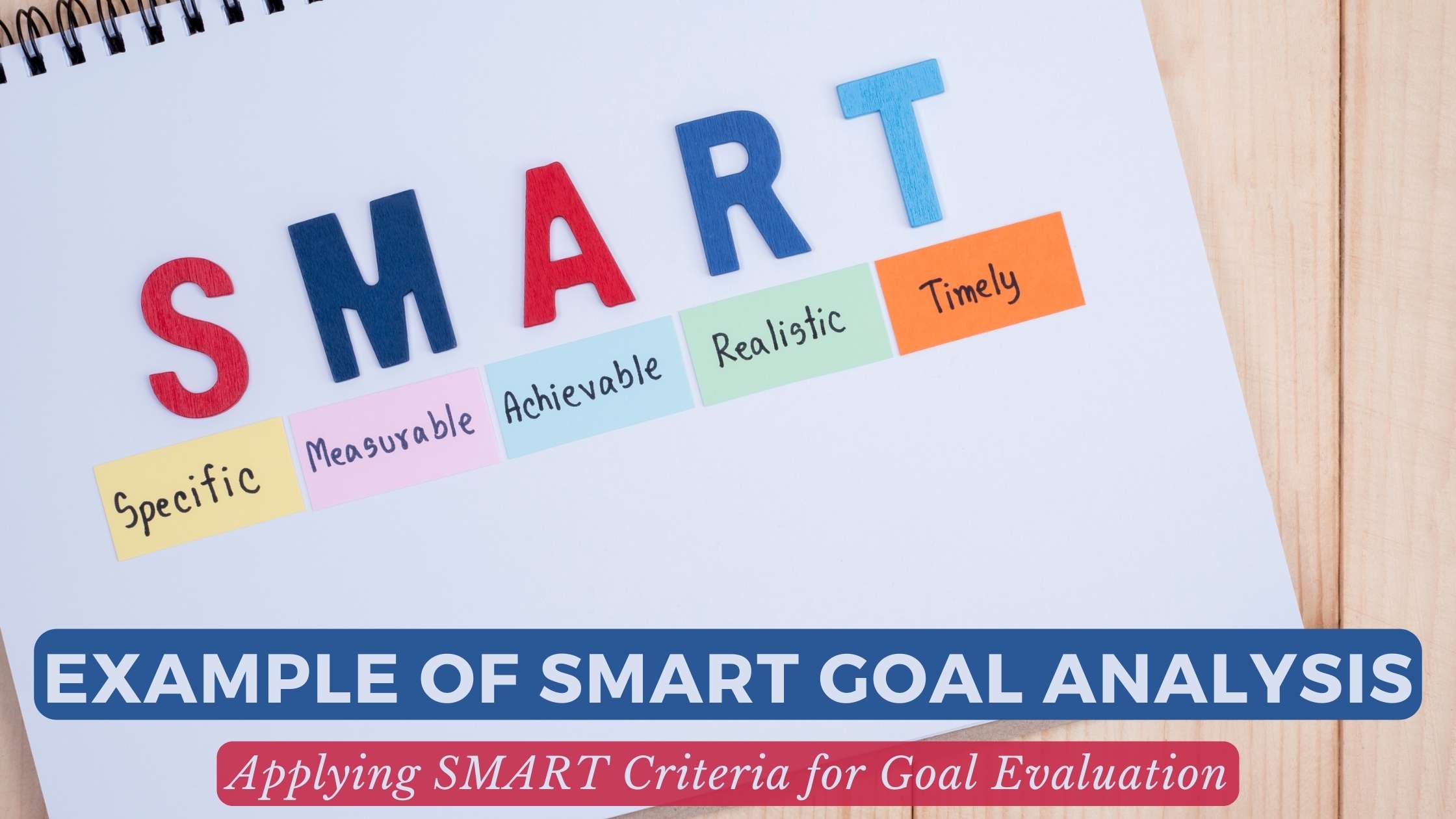Example of SMART Goal Analysis: Applying SMART Criteria for Goal Evaluation


Example of SMART Goal Analysis: Applying SMART Criteria for Goal Evaluation
Setting goals is an integral part of personal and professional growth, but not all goals are created equal. To ensure effectiveness and success, goals should adhere to the SMART criteria – Specific, Measurable, Achievable, Relevant, and Time-bound. In this article, we delve into the intricacies of SMART goal analysis, providing a comprehensive guide on how to apply these criteria for meticulous goal evaluation.
Understanding SMART Goal Analysis
1. Specific: Defining Clarity in Objectives
A SMART goal must be specific, leaving no room for ambiguity. When analyzing goals, focus on the clarity of objectives. For instance, transforming a vague goal like “increase sales” into a specific goal such as “achieve a 15% increase in monthly sales through targeted marketing strategies” provides a clear direction.
2. Measurable: Quantifying Progress
Measuring progress is vital for goal analysis. Examining how well a goal incorporates quantifiable metrics allows for effective evaluation. By defining key performance indicators (KPIs), individuals and businesses can track and measure their advancement toward achieving the set objectives.
3. Achievable: Ensuring Feasibility
Goals should be challenging yet attainable. During the analysis, assess the feasibility of each goal. An achievable goal takes into account available resources, skills, and time constraints. It prevents the setting of unrealistic expectations that may lead to frustration or burnout.
4. Relevant: Aligning with Purpose
Relevance is a critical factor in SMART goal analysis. Evaluate the goals’ alignment with broader objectives and the overall mission. Ensuring that goals contribute meaningfully to the bigger picture enhances motivation and fosters a sense of purpose.
5. Time-bound: Setting a Deadline
Time constraints provide a sense of urgency and structure. In the analysis, pay attention to whether each goal has a well-defined timeframe. A time-bound goal facilitates effective planning, prioritization, and prevents procrastination.
Example of SMART Goal Analysis in Action
To illustrate the application of SMART criteria, consider the following example:
Generic Goal: Improve customer satisfaction.
SMART Goal: Achieve a 20% increase in customer satisfaction scores (measured through post-purchase surveys) within the next quarter by implementing a customer feedback system and addressing identified pain points in product delivery and support services.
Relevant SaaS Products for Goal Management
1. Asana
Asana serves as a powerful project management tool, assisting individuals and teams in setting, managing, and achieving SMART goals collaboratively.
2. Trello
Trello is an intuitive platform that enables users to organize tasks and projects visually. Its flexibility makes it suitable for goal tracking and progress evaluation.
3. Jira Software
Jira Software by Atlassian is designed for agile project management. It’s beneficial for teams implementing SMART goals with a focus on measurable and achievable outcomes.
4. Monday.com
Monday.com offers a centralized workspace for teams to plan, track, and execute projects. It enhances collaboration and ensures alignment with SMART criteria.
Conclusion: Empowering Success Through SMART Goal Analysis
Analyzing goals through the SMART criteria not only ensures clarity and focus but also enhances the likelihood of successful goal attainment. By applying this analysis to set objectives, individuals and businesses can foster continuous improvement and growth. Leveraging relevant SaaS products like Asana, Trello, Jira Software, and Monday.com further streamlines the goal management process. As a central hub for SaaS insights, Subscribed.FYI complements the SMART goal analysis approach, offering users a comprehensive resource for informed decision-making in their software subscriptions.
In the realm of SaaS tools, Subscribed.FYI emerges as a valuable ally in managing the software stack efficiently. It aligns with the principles of SMART goal analysis by simplifying decision-making, enhancing productivity, and providing insights into various SaaS tools.
Relevant Links:





